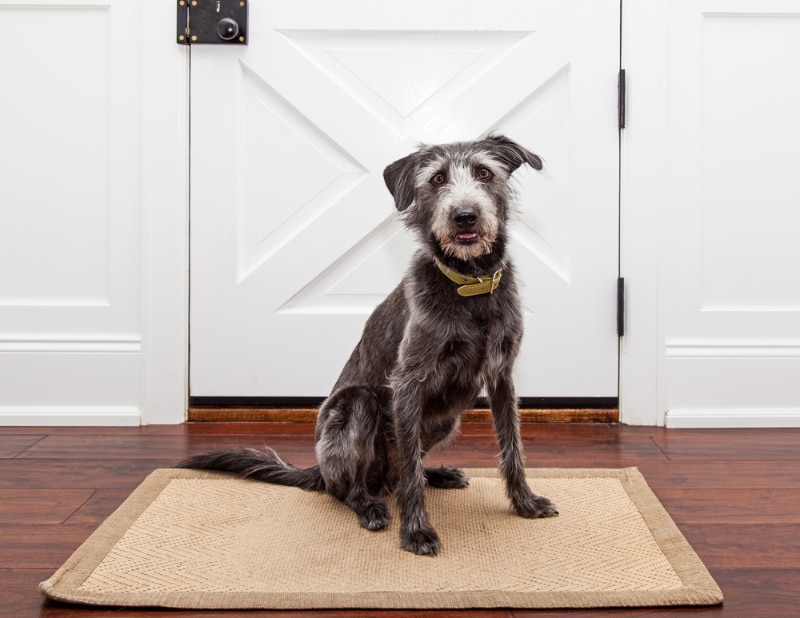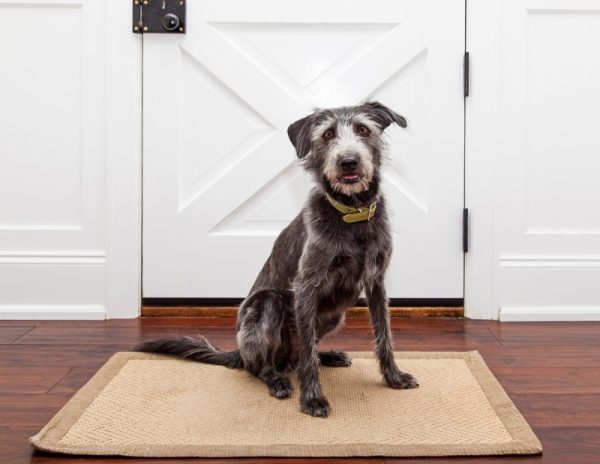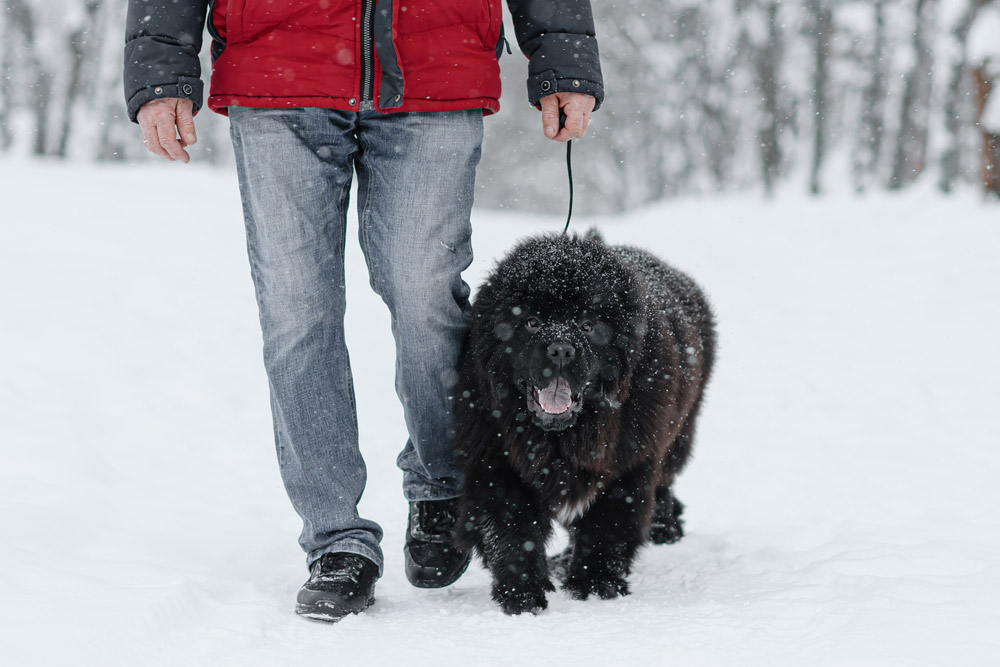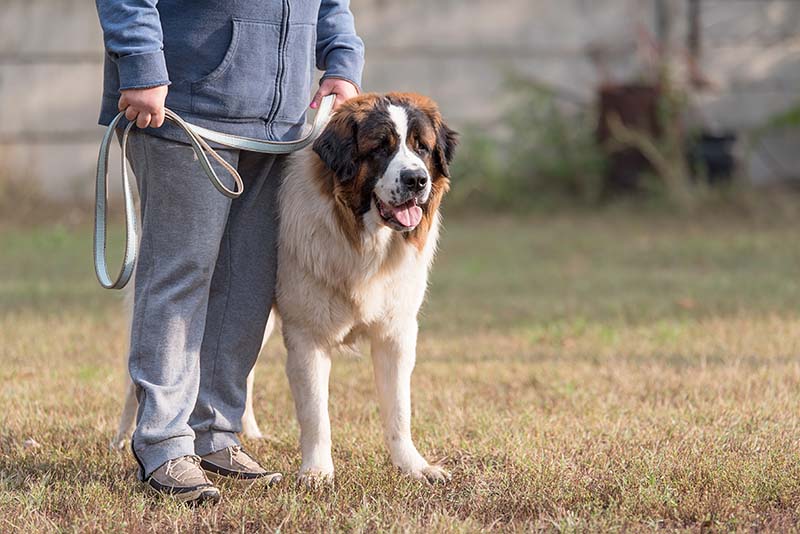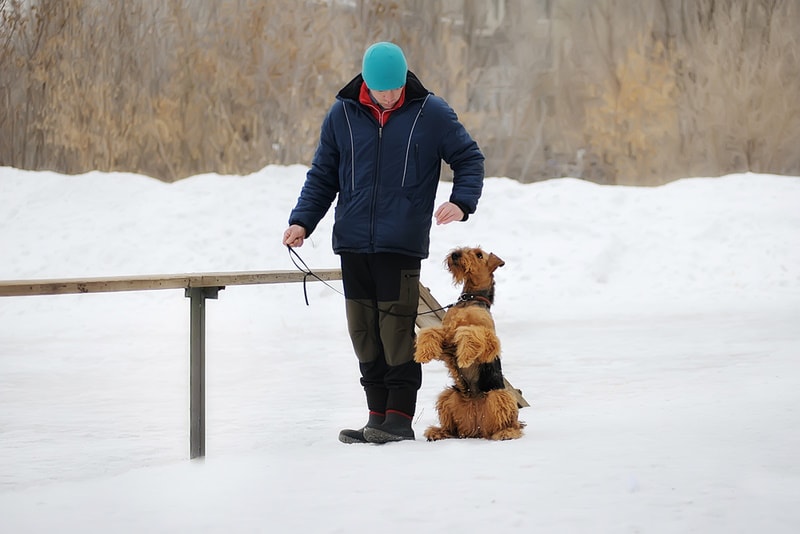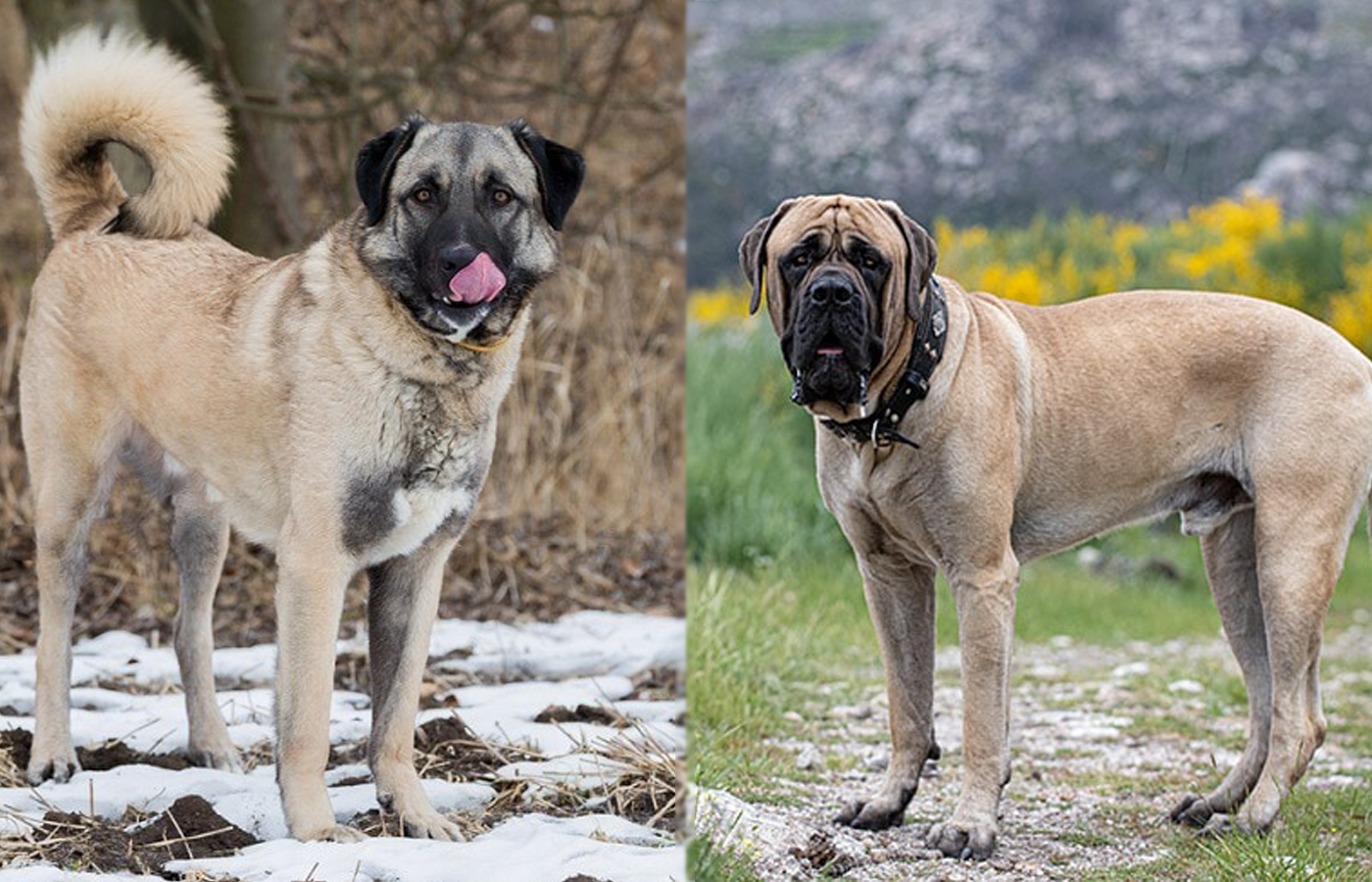Click to Skip Ahead
Door charging is one of the most frustrating and irritating behaviors that dogs can exhibit. It can make social interactions awkward and stressful. If your dog is both obnoxious and aggressive when someone comes to the door, it can turn that person off from coming over or even make them fearful. The good news is that door charging and other aggressive behaviors that have to do with your front door can be corrected. It will take time and persistence, but any dog can learn to sit and be calm when there is a knock at the door. These seven steps, along with tips and tricks, will help you ensure that your dog will no longer be an aggressive mess when someone rings your doorbell.
Preparation
Being uncontrollably excited or even aggressive when someone comes to the door (or “door charging”) is a behavior that can be corrected with appropriate training. Know that this is not an overnight process, and training a dog to be calm when someone comes to the door can take weeks or even months of consistent training.
Speaking to your vet or dog behaviorist can also be very helpful, or even the only solution depending on the degree of aggression of your dog and your possibilities to train them. Before you get started, you will need a few things, including treats and a buddy, to ensure success.
| What You Will Need: |
|
| Time: | A few weeks to a few months |
| Complexity: | Intermediate |
The 7 Tips to Train a Dog When Someone Comes to the Door
1. Teach Your Dog to Stay
The first step to getting your dog to calm down when someone comes to the door is to train them to sit and stay in the entry area. You want your dog to be able to sit, stay on the spot, and not move when you give them the command. Some dogs do better with hand signals, like a closed fist, rather than simple voice commands. You should be able to tell your dog to sit and stay and then walk away. Your dog should not move, and they should remain calm. Instilling these basic building blocks of training is the foundation that you need to work from for the next steps.
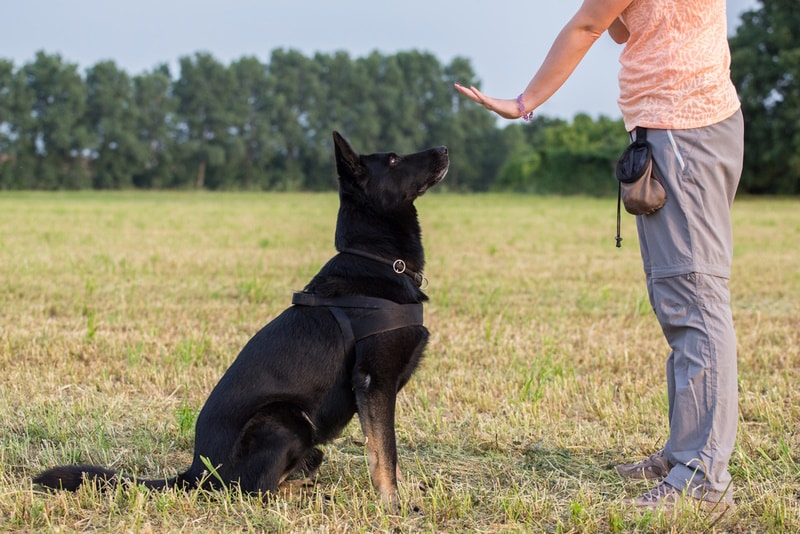
2. Teach Your Dog to Remain Calm and Still When Sitting
Once you can get your dog to sit and stay in the entry area, you need to be able to get them to sit still and be calm while doing so. Sitting should be a calm position. Designating a rug or a mat to maintain a relaxed sitting position can be very helpful. You can also practice this on walks or while they are playing in the backyard. When they sit, they need to remain calm and still and focus on you.
Once your dog sits and calms down, reward them with a treat. If they are being particularly calm, give them two treats. Do this until your dog is able to remain calm and still when they are sitting by the door, and make sure that they are focused on you (or the treat you are offering them).
3. Practice Knocking and Give Your Dog a Treat
Next, you want to start practicing with your dog using the door. In this step, it is best to have two people. One person, ideally one who is familiar to your dog, should go outside and knock on the door, the other should stay inside with the dog. When the knock happens, your dog is going to get excited (or aggressive) and start doing their thing. When the dog starts to get worked up, tell them to sit and stay. If they obey, reward them immediately. If they are not listening, get them to focus on you and calm down until they sit. Once they are sitting, reward them. This is a good step to practice with people your dog knows so that the person who eventually comes through the door is a friendly face.
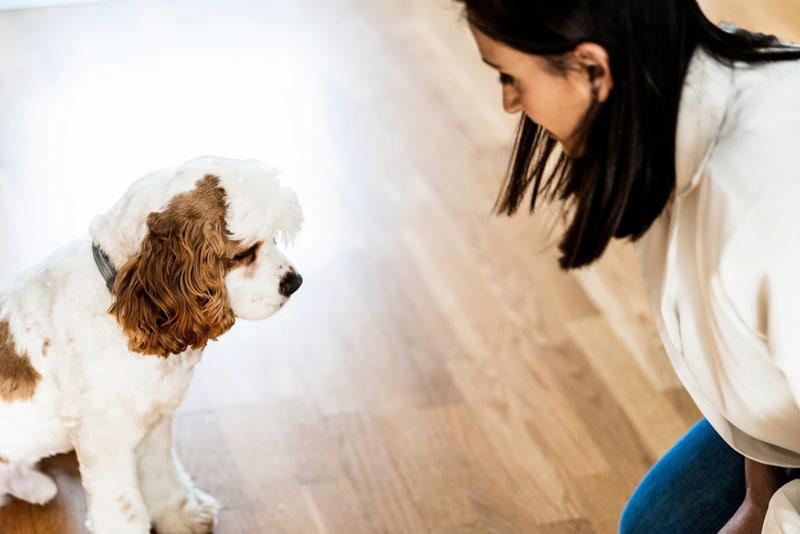
4. Open the Door Frequently to Show Your Dog That No One Is There
During the training, you should also open the door from time to time when no one is there to show your dog that the door isn’t that exciting. Opening the door and inviting your dog over when no one is there will start to build an association between your dog and the door that is mundane. The door isn’t exciting. The door is boring. There isn’t always someone at the door, and when there is, sometimes it’s a friend.
You can also practice opening the door when no one is around and getting your dog to sit and stay. This will build a positive association and expectation that when the door opens, your dog should be sitting, and they will get rewarded. Eventually, your dog should see the door open, sit, and expect a treat. This behavior will start to override the urge to be aggressive or hyperactive.
5. Continue Practicing Knocking and Ringing Without Strangers
Before you can expect your dog to be perfectly well-behaved next time you have someone over, you need to keep practicing. You should practice at least once or twice per day with your dog by either knocking on the door and reinforcing the sitting behavior or by opening the door and showing your dog that there is nothing interesting there. Remember to reward them with treats for good behavior. You should practice without strangers and keep being consistent with your training before you start having random people over.
Over time, you should see your dog’s behavior and attentiveness improve through practice. Once you are confident that your dog is obeying consistently and is not getting too worked up during training, it is time to see the results with actual strangers.

6. Put It All Together
Now it is time to start working with your dog when strangers come to the door. Theoretically, at this point, your dog should no longer know the difference between there being a stranger at the door, you at the door, nothing at the door, or a friend at the door. If your training has been successful up until this point, having anyone come to the door should yield better results when it comes to your dog’s behavior. One of the reasons that you build to this point using the previous steps is to desensitize your dog to the door. Next time a stranger comes to the door, your dog should be able to stop, sit, wait, focus on you, and expect a treat rather than lose their mind.
The next time a stranger comes to the door, your dog should be able to stop, sit, wait, focus on you, and expect a treat rather than lose their mind.
7. Be Consistent
It is important to be consistent when pursuing any sort of dog training. You can’t have rules sometimes, but not other times. Whenever someone comes to the door, whether it is a stranger, a friend, or a family member, your dog needs to remain calm. Letting your dog get excited when your partner comes home will only make it more likely that they will continue to be aggressive when a stranger comes to the door. Training and expectations need to be consistent always.
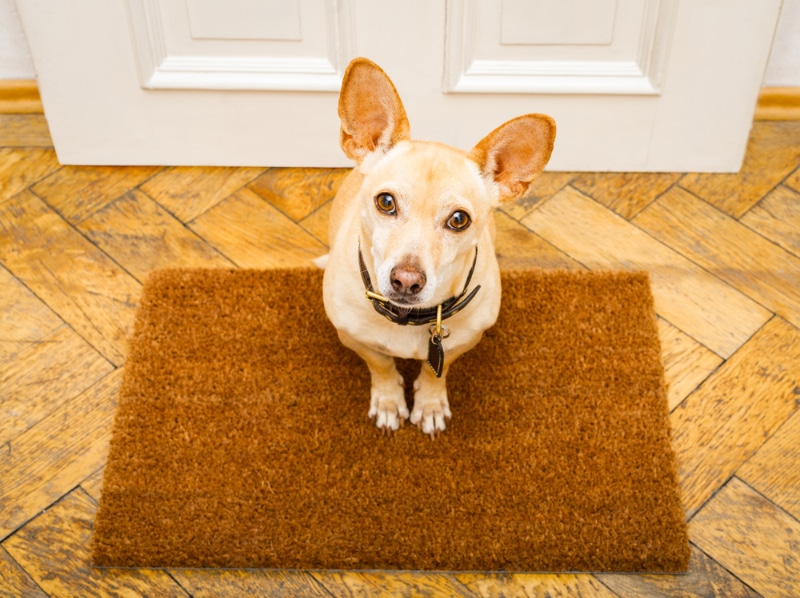
Use a Crate, a Leash, or a Baby Gate if Necessary
Sometimes, dogs have a thing about the door that can take longer to correct than people expect. If your dog simply doesn’t want to listen when a person comes to the door, no matter what you do, don’t hesitate to use a crate or a leash or a baby gate to help control them better. However, if the dog perceives confinement as a punishment, it could end up doing more harm than good. You can also use a leash to help your dog sit, stay, a
The truth is, sometimes people are going to come to the door when you are in the middle of your training, and your dog is going to react badly. Some dogs are also much more reactive and aggressive when it comes to the door than other dogs. That means some dogs are going to take longer to train and require more effort to keep calm. Using tools like leashes and crates is totally valid in these situations.
Conclusion
These steps will help you ensure that your dog remains calm, cool, and collected the next time someone comes to the door. The key is to be consistent, constantly reward good behavior, desensitize your dog to the door, and ensure that they can sit, stay, and be calm at the drop of a hat. Some dogs will take to this training extremely well and will train in just a couple of weeks. Other dogs might take months to fully grasp the concept. Treats and consistency will go a long way toward ensuring success in this training endeavor.
Featured Image Credit: GoodFocused, Shutterstock

